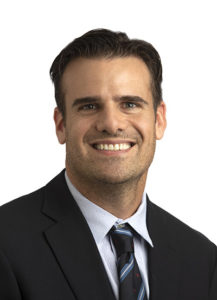World Keratoconus Day: A conversation with Dr. Dimitrios Karamichos
World Keratoconus Day is celebrated on Nov. 10 every year. It is sponsored by the National Keratoconus Foundation, an educational program of the Gavin Herbert Eye Institute, University of California Irvine. The day is dedicated to raising awareness about keratoconus, as well as educating and advocating for those living with keratoconus.
Work is underway at The University of North Texas Health Science Center at Fort Worth (HSC) to better understand and treat this eye condition.
As the most common corneal ectasia, keratoconus (KC) is defined as bilateral and asymmetric corneal degeneration with localized corneal thinning and protrusion of the thinned cornea. It affects about 1:400 to 1:2000 people worldwide.
Keratoconus is currently the leading cause of corneal transplantation in western countries. Keratoconus is a complex, multifactorial disorder with contributions from both genetic and environmental factors as well as biomechanical, metabolic, and hormonal factors. Those who live with keratoconus face numerous challenges, with significant socioeconomic impact. Keratoconus is known to disqualify people from securing various jobs and joining the military. Furthermore, and perhaps more alarming, it was once thought that keratoconus does not recur within the transplanted corneal tissue (the gold standard treatment). However, recent studies show that corneal transplants do not fully eliminate the disease.
The National Eye Institute’s Visual Function Questionnaire, which collects data from more than 1,200 KC patients over a seven-year period, identified significant quality of life decline in keratoconus patients. These findings highlight how efforts to improve diagnostics and methods of treatment are critical.
Meet Dr. Karamichos

I earned my PhD in Tissue Engineering/Molecular Biology in 2006 at University College London, United Kingdom. After completing my PhD, I served as a Postdoctoral Fellow at the University of Texas Southwestern Medical Center and later at the Schepens Eye Research Institute at Harvard Medical School. My research focus was on the development of new therapies to prevent the devastating effects of corneal fibrosis, and keratoconus. In 2013, I moved to the Dean McGee Eye Institute, Department of Ophthalmology at the University of Oklahoma Health Sciences Center, where I stayed until the summer of 2020. I am currently Professor and Director of Research at the North Texas Eye Research Institute (NTERI) at The University of North Texas Health Science Center at Fort Worth (HSC). My research is funded by NIH. It focuses on corneal trauma, keratoconus, and the development of noninvasive therapeutic agents.
I have been working on keratoconus for numerous years and I find it extremely rewarding. The thought of being able to help the ophthalmology community treat keratoconus is exciting and extremely challenging. My lab members and I are fully committed to keratoconus research and look forward to new discoveries that can alter the way we manage, and treat this corneal disease.
What is Keratoconus?
The word, keratoconus, originates from the Greek words kerato (cornea) and konos (cone). Keratoconus is the most common ectatic disease of the cornea and was first described and named by Dr. John Nottingham in 1854 (Nottingham, 1854). The disease is bilateral though asymmetric, characterized by progressive thinning and steepening of the cornea. Although characterized as a non-inflammatory, recent studies have indicated that there may be an inflammatory component. Initial presentation typically occurs during adolescence followed by 10–20 years of progression before a stable phase is reached in the third or fourth decade of life. In general, progression is heterogeneous but ultimately 15–20% of patients will require corneal transplantation.
Is it serious?
Untreated keratoconus can lead to permanent vision loss. The changes to the cornea make it extremely difficult for the eye to focus with or without eyeglasses or standard soft contact lenses.
How do people get it?
The aetiology of keratoconus is multifactorial and remains unresolved. Myopia, hormonal dysregulations, atopy, genetics, eye rubbing, eczema, Down syndrome, parental consanguinity, and connective tissue diseases among others, have been shown to have a positive association with keratoconus. Interestingly, a negative association has been reported between keratoconus and diabetes.
What research is underway at HSC to cure this disease?
The Karamichos lab, supported by the NEI/NIH, currently investigates those factors/modulators responsible for the Keratoconus onset. The lab is also developing novel and non-surgical therapeutics that can help arrest or even reverse keratoconus manifestations.
Can people live a normal life with this disease?
If the disease does not progress to mid/advanced stages, patients can live a normal life with glasses and/or specialized contact lenses. However, once the disease advances from its early manifestations, treatment is absolutely necessary.






Social media